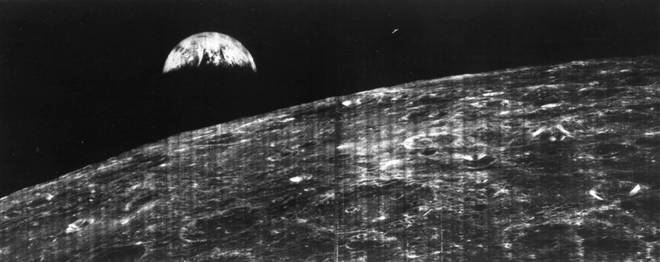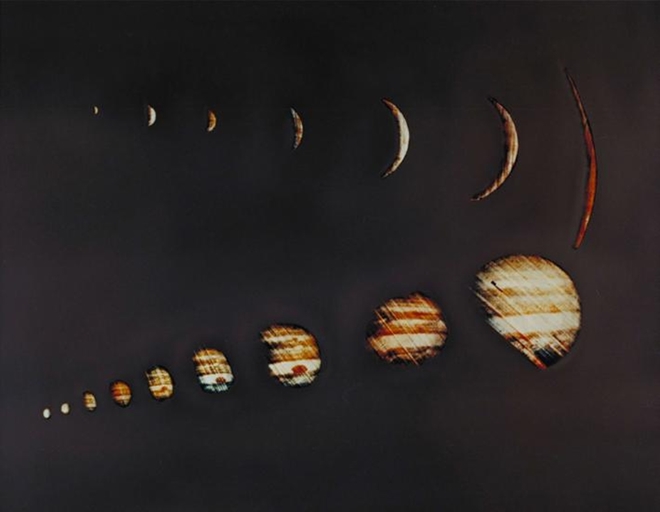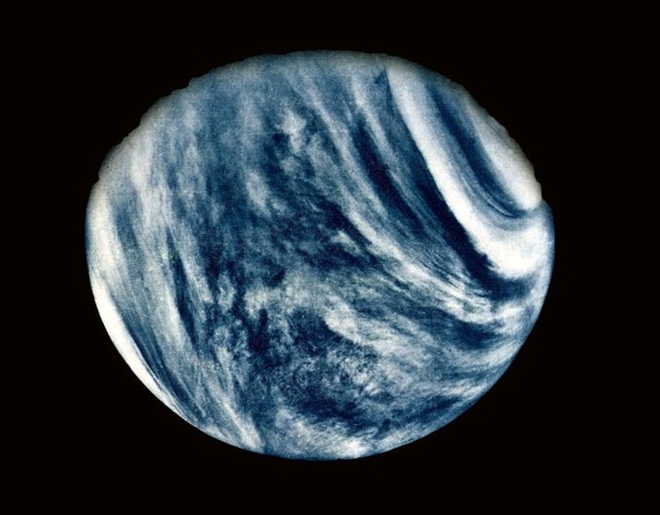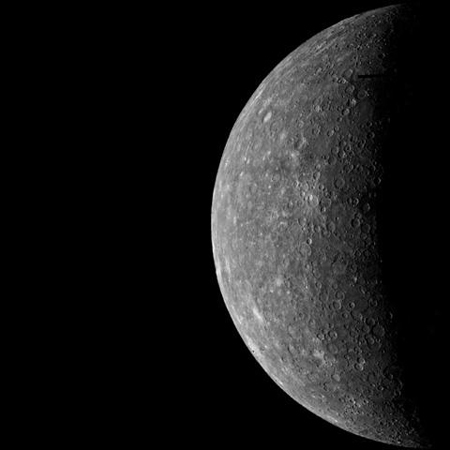Admire the first photos of planets in the solar system
The first images of planets in the solar system are not always clear and sharp. But these are important imprints in the early period of human conquest of the universe.
See planets in the solar system in the early days of humans conquering the universe

On July 14, 1965, the Mariner 4 spacecraft flew across Mars, and this was the first time humanity had seen close-up shots of another planet's surface.Mariner 4 camera captures 22 photos of the red planet, stores them on a magnetic tape and then successfully transmits them to Earth.(Photo: NASA)

Lunar Orbiter I, the US shuttle, took the first picture of Earth on August 23, 1966, when it was moving around the Moon's orbit.In 1966 was the period when the United States prepared to send people to the Moon.Therefore, they launched before unmanned spacecraft to orbit the Moon, mapped to find a landing site later.(Photo: NASA)

Jupiter is the largest planet in the solar system.Jupiter appears dimly in the sequence of images captured by the Pioneer 10 spacecraft, when it approaches the giant gas planet on December 4, 1973.These are also the first close-up shots of Jupiter.(Photo: NASA)

This is the first photo of Venus by Mariner 10 probe on February 5, 1974.The image has highlighted the color of clouds of carbon dioxide (CO2) surrounding Venus, where the surface temperature reaches nearly 500 ° C.(Photo: NASA)

The probe Mariner 10 of the US Aerospace Agency (NASA) first photographed Mercury, the closest planet to the Sun, as it flew over the dark surface of the planet from a distance of 5.4 million kilometers, on March 24, 1974.(Photo: NASA)

The Pioneer 11 spacecraft photographed Saturn and Titan's moon (bottom right) while the ship was moving through Saturn's outer perimeter, in September 1979.Pioneer 11 also discovered the new Earth Ring (belt F), measured the temperature on Titan's moon and found it too cold to survive.(Photo: NASA)

NASA's Voyager 2 spacecraft first photographed Uranus in 1986. The resulting image shows that Uranus has an almost uniform color and no clouds or storms like giant gas planets other.(Photo: NASA)

In 1989, Voyager 2 cruised past Neptune and recorded the "Big Dark Spot" image of the southern hemisphere about the size of "Big Red Spot" on Jupiter.This region of the weather is maintained by winds of up to 2,100 km per hour, most powerful than the planets in the solar system.Neptune has a belt system, but they are fainter than Saturn's famous belt.(Photo: NASA)

The New Horizons spacecraft took the first close-up shot of Pluto on July 13.The resulting image helps us observe Pluto at a more detailed level than before.Dwarf planets are reddish copper with dark spots and a bright heart-shaped area.(Photo: NASA)
- Unknown mystery about planets outside the solar system
- Discover more than 700 planets outside the solar system
- Planets in the Solar System
- The distance from the Earth to the celestial bodies in the solar system
- Space Science: The order of 8 (or 9) planets in the Solar System
- NASA announces a map of 4,000 planets outside the Solar System
- Latest images of 7 planets in the Solar System version 2.0
- Discover the oldest solar system outside the solar system
- Detection of the Solar System may contain Earth-like planets
- How the plane took off on the solar system planets
- Our solar system in the galaxy is rare
- Ultra-sharp images of the solar system captured by the camera
 Van Allen's belt and evidence that the Apollo 11 mission to the Moon was myth
Van Allen's belt and evidence that the Apollo 11 mission to the Moon was myth The levels of civilization in the universe (Kardashev scale)
The levels of civilization in the universe (Kardashev scale) Today Mars, the sun and the Earth are aligned
Today Mars, the sun and the Earth are aligned The Amazon owner announced a secret plan to build a space base for thousands of people
The Amazon owner announced a secret plan to build a space base for thousands of people